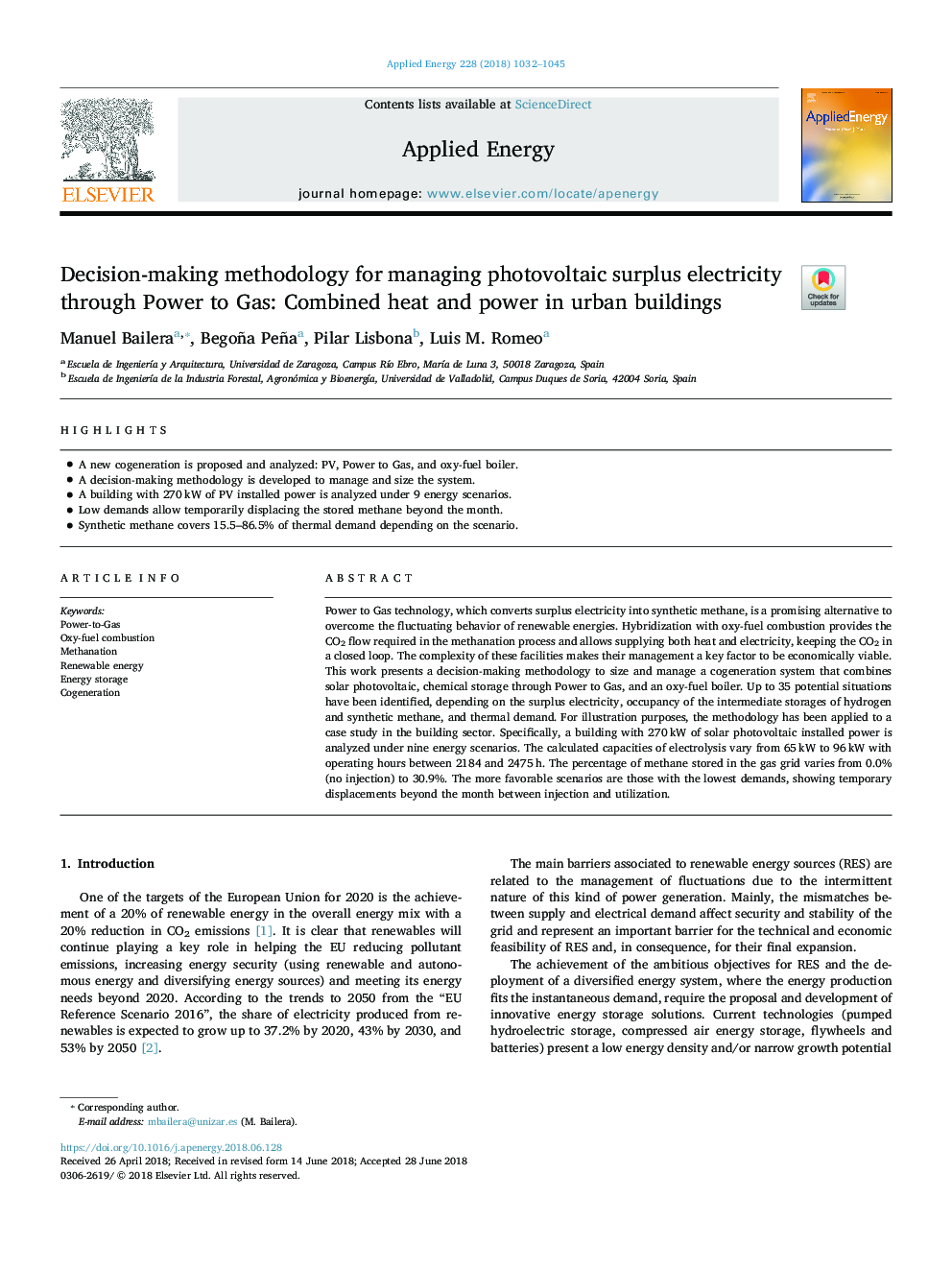| Article ID | Journal | Published Year | Pages | File Type |
|---|---|---|---|---|
| 6679794 | Applied Energy | 2018 | 14 Pages |
Abstract
Power to Gas technology, which converts surplus electricity into synthetic methane, is a promising alternative to overcome the fluctuating behavior of renewable energies. Hybridization with oxy-fuel combustion provides the CO2 flow required in the methanation process and allows supplying both heat and electricity, keeping the CO2 in a closed loop. The complexity of these facilities makes their management a key factor to be economically viable. This work presents a decision-making methodology to size and manage a cogeneration system that combines solar photovoltaic, chemical storage through Power to Gas, and an oxy-fuel boiler. Up to 35 potential situations have been identified, depending on the surplus electricity, occupancy of the intermediate storages of hydrogen and synthetic methane, and thermal demand. For illustration purposes, the methodology has been applied to a case study in the building sector. Specifically, a building with 270â¯kW of solar photovoltaic installed power is analyzed under nine energy scenarios. The calculated capacities of electrolysis vary from 65â¯kW to 96â¯kW with operating hours between 2184 and 2475â¯h. The percentage of methane stored in the gas grid varies from 0.0% (no injection) to 30.9%. The more favorable scenarios are those with the lowest demands, showing temporary displacements beyond the month between injection and utilization.
Related Topics
Physical Sciences and Engineering
Energy
Energy Engineering and Power Technology
Authors
Manuel Bailera, Begoña Peña, Pilar Lisbona, Luis M. Romeo,
